
sundrops, narrowleaf evening primrose
Oenothera fruticosa
Sundrops prefer moderately fertile, dry, well-drained soil in full sun to very light shade. Good … Continued
Drought-tolerant and drought-resistant plants may still need supplemental water from time to time, but they can survive periods of dryness without dying.
Drought-resistant plants like cactus, hens and chicks, and sedums can go for very long periods without water and do not tolerate poorly drained locations. Drought-resistant tropical plants grown indoors in winter like cactus, Sansevieria, Echeveria, and other succulents sometimes fail due to overwatering.
Drought-tolerant plants grow in many textures and sizes and have different adaptations that help them get through periods of drought:
The latter two types of plants are drought tolerant once established because any new planting, regardless of drought tolerance, needs to be watered during the first growing season to allow roots to reach the depths needed to access moisture during dry periods.
It’s also important to note that survival may not mean that the plant will look its best during this time. Watering weekly for a longer period of time will result in the best-looking gardens with the highest tolerance for drought. During the hottest, dryest times in summer, watering deeply twice a week is recommended. These less frequent waterings will encourage root systems to expand, making it easier for plants to access moisture when their environment is dry.
Winter drought has become a bigger problem in recent years as snowfall declines. Evergreen plants are especially vulnerable during winter drought because their foliage continues to shed moisture while dormant deciduous plants have shed their leaves and can conserve moisture in woody stems and underground. Watering shrubs and trees in winter on days when the temperature allows (above freezing) will help ensure their healthy return in spring.
Here are some drought-tolerant and drought-resistant plants to grow—

Oenothera fruticosa
Sundrops prefer moderately fertile, dry, well-drained soil in full sun to very light shade. Good … Continued
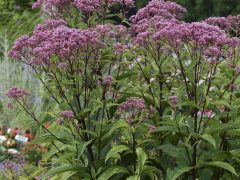
Eutrochium {Eupatorium} purpureum
Shade tolerant and showy, this easy-to-grow native stays in place in the garden and invites … Continued
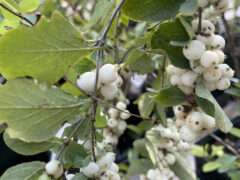
Symphoricarpos alba
This rounded deciduous shrub grows to 3-6′ tall and wide. Native to dry rocky wooded … Continued
Symphoricarpos x doorenbosii 'Magic Berry'
Light pink blooms in summer followed by large, pink fruit on arching stems with dark … Continued
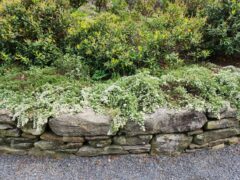
Symphyotrichum ericoides 'Snow Flurry'
The ‘Snow Flurry’ selection has a compact spreading habit and forms a ground cover with … Continued
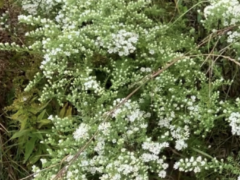
Symphyotrichum ericoides
Wiry, branching stems are covered in small glossy green, needle-like leaves and a snowstorm of … Continued
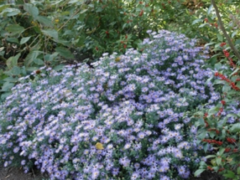
Symphyotrichum laevis 'Bluebird'
A Mt. Cuba selection of the native smooth aster introduced by Dr. Richard Lighty, this … Continued

Symphyotrichum novae-angliae
New England aster brings ahowy display of violet-pink flowers late August til frost. A staple … Continued
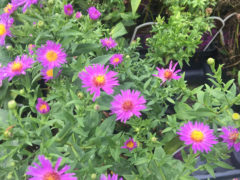
Symphyotrichum novae-angliae 'Purple Dome'
A compact selection recommended by the Mt. Cuba Center as a cultivar that draws loads … Continued

Symphyotrichum novi-belgii 'Wood's Purple'
New York aster is a low-maintenance perennial for average, medium moisture, well-drained soil in full … Continued

Symphyotrichum novi-belgii 'Alert'
New York aster is a low-maintenance perennial for average, medium moisture, well-drained soil in full … Continued
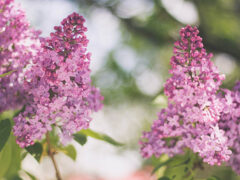
Syringa vulgaris
Common lilacs are mid-season spring bloomers typically flowering in mid-May in lavender or white. We … Continued